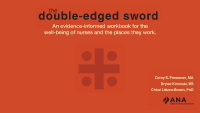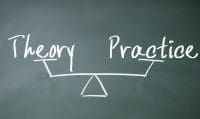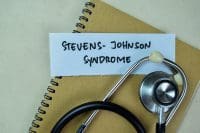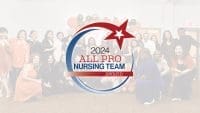New evidence-based practices are being introduced in healthcare settings not just to improve patient safety and satisfaction but also to reduce hospital readmissions. By using the teach-back method when providing discharge education, nurses can increase patients’ understanding and compliance, which can help reduce readmissions.
Here’s how teach-back works: Ask the patient to explain the information you’ve just presented, so you can confirm if he or she comprehends that information. Say, for instance, you’ve just taught a patient about taking daily weights. Next, ask an open-ended question or make a statement that implicitly asks for a response; for instance: “Please explain how you will weigh yourself every day.” Based on the patient’s response, you can determine whether he or she understands the information or needs further teaching.
A hospital admission usually stems from an acute illness or exacerbation—but the inpatient experience might not be the best learning environment. Nurse educators should consider this when planning education, as it affects learning ability and motivation to learn. One continuous hour of teaching is a large block of time for an acutely ill patient to absorb and retain information. Also be aware that some medications can alter mental status and reduce learning capacity.
For the most effective education in an acute-care setting, hold teach-back sessions as soon as the patient is identified as high-risk, providing he or she is medically stable. Teach-back sessions during transitional care and in the home environment may be more applicable to a patient’s daily lifestyle and specific needs. If you’re a home-care nurse, make sure patients have the appropriate equipment, such as a working scale and blood pressure cuff, so they can monitor their weight and vital signs. Food choices also are easier to review in the home, where you can show patients examples of what to eat and point out foods they might already have that are (or aren’t) good choices. (See Teach-back essentials by clicking the PDF icon above.)
Hospital study at the bedside
Many patients with heart failure are readmitted frequently. In an educational study conducted at Washington Regional Medical Center in Fayetteville, Arkansas, 23 high-risk heart-failure patients participated in 60-minute teach-back sessions. Over the last 2 years, this hospital has had an average 30-day readmission rate of approximately 18% for all heart-failure patients, regardless of the chief diagnosis. The study goal was to reduce the 30-day readmission rate to 13.8% for all heart-failure patients during the 180-day study period. The hospital set the 13.8% goal using readmission data from 2010 and 2011; achieving this goal would mean a 20% reduction in 30-day heart-failure readmissions. The study took place from November 1, 2012 through April 30, 2013. Patients were identified as high risk by the heart-failure nurse practitioner (NP). Criteria for high-risk status included any of the following:
- The patient’s current admission was a readmission within 30 days after discharge.
- The patient had two or more admissions for heart failure within the previous year.
- The patient scored above 25% on the Yale Readmission Risk Score for Heart Failure.
Once identified, patients were asked to consent to participate. If they consented, the principal and co-principal investigators performed a 60-minute teach-back session. When possible, sessions were preplanned with patients for a convenient time that allowed for family presence. Sessions were never held on the day of admission, when the patient was suffering the stress of illness and least likely to absorb information. Ideally, they took place 1 or 2 days after admission. Three patients were taught on the day of discharge due to their fast recovery; however, they were “checked out” mentally and in a hurry to leave—a circumstance not favorable to learning.
Teach-back sessions covered heart failure self-management in the outpatient setting. The first 20 minutes focused on the definition, causes, and signs and symptoms of heart failure. The second 20 minutes addressed diet, fluid restrictions, and daily weights and reinforced important instructions for managing heart failure at home, such as daily activity and family support. The last 20 minutes focused on the importance of adhering to prescribed medications and follow-up appointments.
If a patient’s answers to open-ended questions indicated he or she was less educated on or more interested in a certain aspect of care, more time was spent on that topic. An educational outline was used but altered to suit each patient’s individual needs.
At discharge, each patient received a personalized list of home medications, including indications, dosages, frequency, and special instructions. The heart-failure NP called the patient at home within 72 hours after discharge and then weekly. During the first phone call, she asked: “What’s one thing you learned from your teach-back session?” During the first weekly phone call, she asked: “Have you made any lifestyle changes to manage your heart failure at home since your teach-back session? If yes, what were the changes? If no, why not?” The answers helped determine if the patients had benefited from the teach-back session.
How well did it work?
To assess effectiveness of the teach-back method, participants’ medical records were reviewed for 30 days after discharge to determine if readmission occurred. One of the 23 participants died during a subsequent hospitalization. Three (13%) were readmitted within 30 days, but only one readmission was related to heart failure. Over the 6-month period of teach-back education, the average 30-day readmission rate was 16.2%; this was for all heart-failure patients, not just those who’d received teach-back. The readmission rate for study participants was 13% over the same period. The highest percentage of readmissions occurred between December and March, which correlates with flu season. While readmissions didn’t reach the goal of 13.8% for all heart-failure patients, they decreased from the pre-study average of 18%.
Patient responses to postdischarge phone calls from the NP varied widely from positive to negative. Three patients didn’t remember the teach-back session at all, which may call into question the value of such teaching in the hospital during an acute illness. Five patients said the information taught was a reminder of what they’d previously learned. Others reported they learned for the first time the importance of monitoring daily weight, sodium intake, and fluid balance as well as reporting symptoms. Ten of the 23 patients reported they’d changed their dietary habits, particularly sodium intake, because of the teaching. Others reported they were more closely monitoring their weight and symptoms. Several said they didn’t make changes because they’d already been doing everything covered in the teach-back session. The study suggests teach-back education might be more effective with new information a patient hasn’t previously received.
The authors concluded that the teach-back method allows educators to fully assess what patients understand and to provide more emphasis on topics they don’t fully grasp. It should be incorporated throughout all stages of patient care to teach information specific to the patient’s plan of care.
Click here for a list of selected references.
The authors work at Washington Regional Medical Center in Fayetteville, Arkansas. Melanie Haney is the assistant director of cardiology/progressive care. Jessica Shepherd is a cardiology/progressive care staff nurse and clinical coordinator.


















